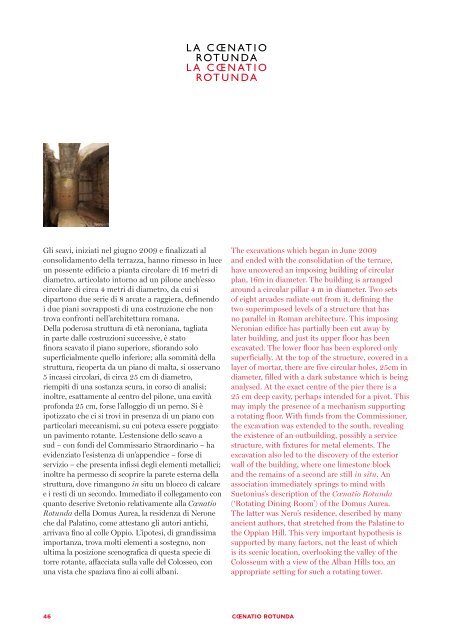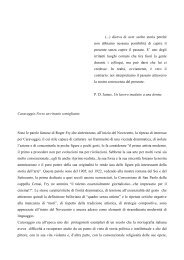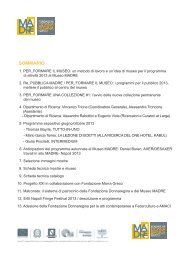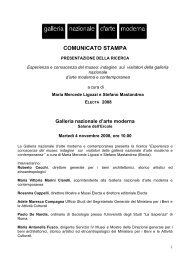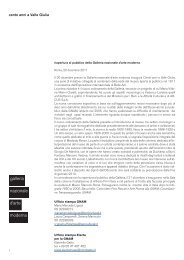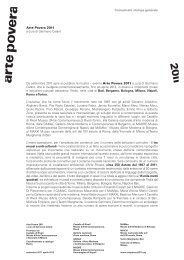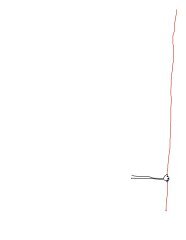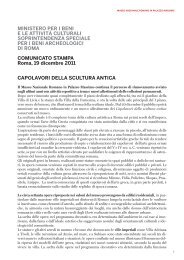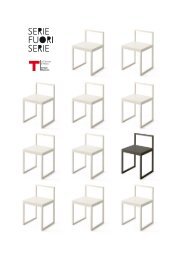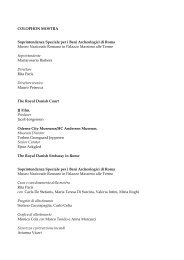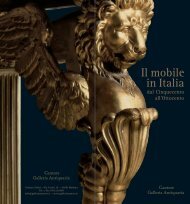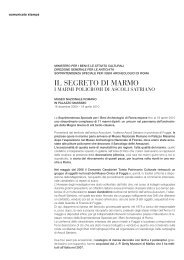Create successful ePaper yourself
Turn your PDF publications into a flip-book with our unique Google optimized e-Paper software.
Gli scavi, iniziati nel giugno 2009 e finalizzati al<br />
consolidamento della terrazza, hanno rimesso in luce<br />
un possente edificio a pianta circolare di 16 metri di<br />
diametro, articolato intorno ad un pilone anch’esso<br />
circolare di circa 4 metri di diametro, da cui si<br />
dipartono due serie di 8 arcate a raggiera, definendo<br />
i due piani sovrapposti di una costruzione che non<br />
trova confronti nell’architettura romana.<br />
Della poderosa struttura di età neroniana, tagliata<br />
in parte dalle costruzioni successive, è stato<br />
finora scavato il piano superiore, sfiorando solo<br />
superficialmente quello inferiore; alla sommità della<br />
struttura, ricoperta da un piano di malta, si osservano<br />
5 incassi circolari, di circa 25 cm di diametro,<br />
riempiti di una sostanza scura, in corso di analisi;<br />
inoltre, esattamente al centro del pilone, una cavità<br />
profonda 25 cm, forse l’alloggio di un perno. Si è<br />
ipotizzato che ci si trovi in presenza di un piano con<br />
particolari meccanismi, su cui poteva essere poggiato<br />
un pavimento rotante. L’estensione dello scavo a<br />
sud – con fondi del Commissario Straordinario – ha<br />
evidenziato l’esistenza di un’appendice – forse di<br />
servizio – che presenta infissi degli elementi metallici;<br />
inoltre ha permesso di scoprire la parete esterna della<br />
struttura, dove rimangono in situ un blocco di calcare<br />
e i resti di un secondo. Immediato il collegamento con<br />
quanto descrive Svetonio relativamente alla Cœnatio<br />
Rotunda della Domus Aurea, la residenza di <strong>Nerone</strong><br />
che dal Palatino, come attestano gli autori antichi,<br />
arrivava fino al colle Oppio. L’ipotesi, di grandissima<br />
importanza, trova molti elementi a sostegno, non<br />
ultima la posizione scenografica di questa specie di<br />
torre rotante, affacciata sulla valle del Colosseo, con<br />
una vista che spaziava fino ai colli albani.<br />
L A C ΠN AT I O<br />
ROT U N DA<br />
L A C ΠN AT I O<br />
ROT U N DA<br />
46 CŒNATIO ROTUNDA<br />
The excavations which began in June 2009<br />
and ended with the consolidation of the terrace,<br />
have uncovered an imposing building of circular<br />
plan, 16m in diameter. The building is arranged<br />
around a circular pillar 4 m in diameter. Two sets<br />
of eight arcades radiate out from it, defining the<br />
two superimposed levels of a structure that has<br />
no parallel in Roman architecture. This imposing<br />
Neronian edifice has partially been cut away by<br />
later building, and just its upper floor has been<br />
excavated. The lower floor has been explored only<br />
superficially. At the top of the structure, covered in a<br />
layer of mortar, there are five circular holes, 25cm in<br />
diameter, filled with a dark substance which is being<br />
analysed. At the exact centre of the pier there is a<br />
25 cm deep cavity, perhaps intended for a pivot. This<br />
may imply the presence of a mechanism supporting<br />
a rotating floor. With funds from the Commissioner,<br />
the excavation was extended to the south, revealing<br />
the existence of an outbuilding, possibly a service<br />
structure, with fixtures for metal elements. The<br />
excavation also led to the discovery of the exterior<br />
wall of the building, where one limestone block<br />
and the remains of a second are still in situ. An<br />
association immediately springs to mind with<br />
Suetonius’s description of the Cœnatio Rotunda<br />
(‘Rotating Dining Room’) of the Domus Aurea.<br />
The latter was Nero’s residence, described by many<br />
ancient authors, that stretched from the Palatine to<br />
the Oppian Hill. This very important hypothesis is<br />
supported by many factors, not the least of which<br />
is its scenic location, overlooking the valley of the<br />
Colosseum with a view of the Alban Hills too, an<br />
appropriate setting for such a rotating tower.


